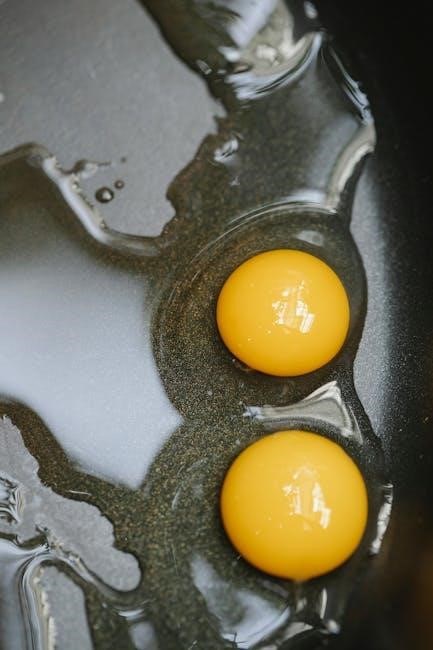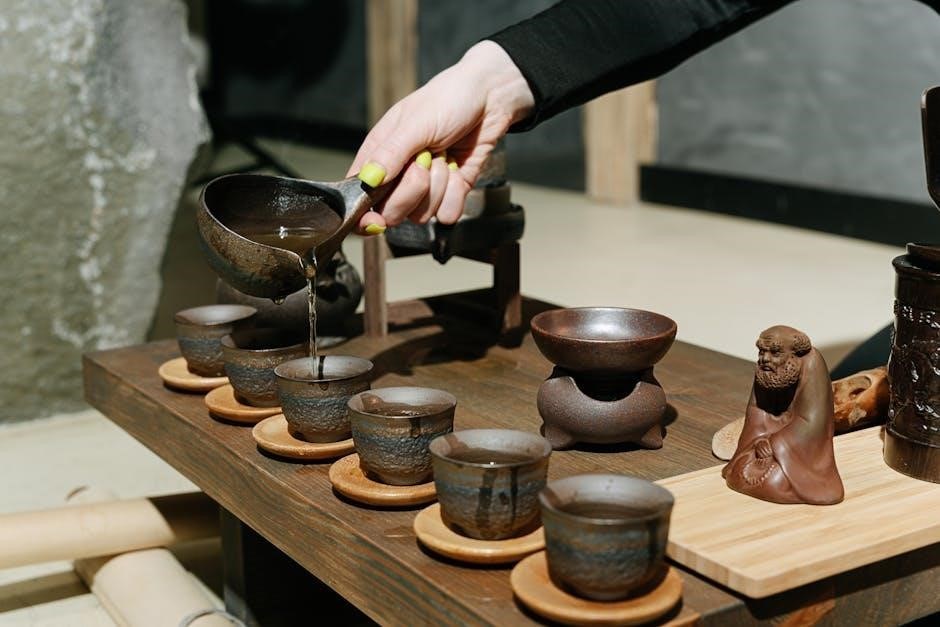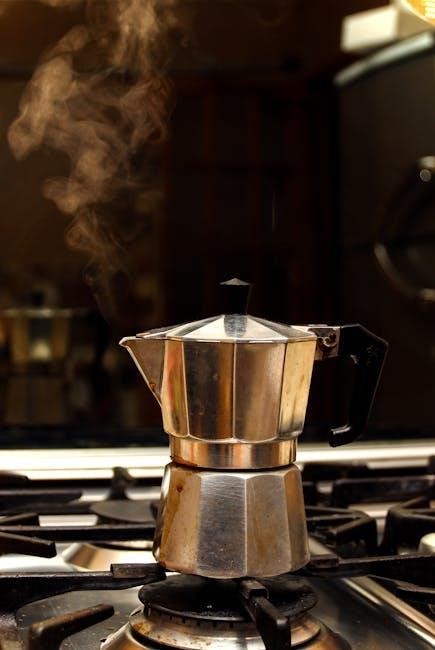Welcome to our comprehensive guide on boiling mouthpiece instructions. This article will walk you through the process, ensuring a proper fit and safety for optimal comfort and protection.
What is a Boiling Mouthpiece?
A boiling mouthpiece is a type of oral appliance designed to be softened in boiling water and then molded to fit an individual’s teeth. It is commonly used for protecting teeth during sports or addressing issues like teeth grinding. The process involves heating the mouthpiece to make it pliable, allowing it to conform to the user’s dental structure for a custom fit. This method provides a cost-effective and self-fitting solution compared to custom-made options, though it requires careful handling to ensure proper shaping and comfort.
Why Proper Fit is Important
A proper fit is crucial for both protection and comfort. A well-fitted mouthpiece ensures adequate coverage and cushioning, reducing the risk of injury during sports or teeth grinding. If the fit is too loose, it may shift during use, while a fit that is too tight can cause discomfort or misalignment. Achieving the right fit ensures the mouthpiece stays securely in place, providing optimal protection and preventing potential dental issues. Proper fit also enhances breathing and speaking, making it essential for both functionality and safety.

Preparing for the Boiling Process
Start by gathering materials like a pot, water, and a timer. Ensure the area is clear and safe for boiling. Follow safety guidelines to avoid burns or accidents during preparation.
Materials Needed
To properly boil and fit your mouthpiece, you’ll need a medium-sized pot, water, a stove, a timer, and a pair of tongs or a slotted spoon. Ensure the pot is large enough to fully submerge the mouthpiece. A clean, heat-resistant surface is also essential for cooling. Optional items include a bowl of cold water for rapid cooling. Having all materials ready beforehand will streamline the process and prevent delays or mishaps during fitting.
Safety Precautions
When boiling a mouthpiece, always handle boiling water and hot objects with care. Use tongs or a slotted spoon to submerge and remove the mouthpiece to avoid burns. Ensure the area is well-ventilated and free from distractions. Never leave boiling water unattended or allow children near the process. Avoid overheating the mouthpiece, as it can damage the material or cause discomfort during fitting. Always let the mouthpiece cool slightly before attempting to fit it to prevent burns or misalignment.
Boiling and Fitting the Mouthpiece
Boiling and fitting the mouthpiece ensures a secure fit. Submerge it in boiling water, wait 20-30 seconds, remove, and quickly bite down to mold it to your teeth.
Submerging the Mouthpiece in Boiling Water
Bring water to a rolling boil in a pot. Carefully submerge the mouthpiece, ensuring it’s fully covered. Use tongs to hold it underwater for 20-30 seconds. Avoid overheating, as this can damage the material. Once softened, remove it with tongs and let it cool slightly before fitting. Proper submersion ensures even softening for a precise fit. Be cautious of hot water to prevent burns during handling.
Timing and Removal from Water
Submerge the mouthpiece in boiling water for 20-30 seconds to soften the material evenly. Use tongs to carefully remove it from the water. Avoid overheating, as this can damage the device. Once removed, let it cool for a few seconds to prevent burns. Timing is crucial—too long can cause degradation, while too short may not soften it properly. Proper removal ensures the mouthpiece is ready for fitting without causing discomfort or damage.
Cooling and Fitting the Mouthpiece
After removing the mouthpiece from boiling water, let it cool for 10-20 seconds to avoid burns. Once slightly cooled, place it in your mouth and bite down gently but firmly to mold it around your teeth. Ensure proper alignment and press evenly to achieve a snug fit. Act quickly, as the mouthpiece hardens rapidly. If needed, re-boil and adjust for a better fit. Avoid overheating, as this can damage the material or cause discomfort.

Allowing the Mouthpiece to Set
Let the mouthpiece cool slightly, then bite down gently to mold it. Allow it to harden completely, which typically takes about 30 seconds, ensuring a secure fit.
Cooling Down the Mouthpiece
After boiling, carefully remove the mouthpiece from the water using tongs or a slotted spoon. Let it cool for about 20-30 seconds to avoid burns. Gently place it in your mouth and bite down to shape it to your teeth. Allow it to harden completely, which typically takes a few minutes. Proper cooling ensures a comfortable fit and prevents discomfort or misalignment. Avoid rushing this step, as it is crucial for the mouthpiece to set correctly.
Hardening and Final Fit
Once cooled slightly, bite down firmly to mold the mouthpiece to your teeth. Hold for 30 seconds to set the shape. Allow it to harden completely, typically 2-3 minutes, for a secure fit. Ensure no air pockets form for optimal protection. The final fit should feel snug and comfortable, providing full coverage without causing discomfort. Proper hardening ensures durability and effectiveness, making it essential for both safety and performance.

Cleaning and Maintenance
Rinse the mouthpiece with cold water after each use. Use mild soap for deeper cleaning, then rinse thoroughly. Avoid harsh chemicals to prevent damage. Store in a dry case to maintain hygiene and shape.
How to Clean the Mouthpiece
To clean the mouthpiece, rinse it with cold water after each use to remove debris. For deeper cleaning, mix mild soap with warm water, soak the mouthpiece for 10-15 minutes, then scrub gently with a soft toothbrush. Avoid using harsh chemicals or hot water, as they may damage the material. After cleaning, rinse thoroughly and pat dry with a clean towel. Regular cleaning ensures hygiene and prevents bacteria buildup, maintaining the mouthpiece’s comfort and effectiveness.
Storage and Hygiene Tips
Store the mouthpiece in a cool, dry place, away from direct sunlight and extreme temperatures. Use a ventilated container to prevent moisture buildup. After cleaning, rinse with cold water and pat dry with a soft cloth. Avoid storing in airtight containers to reduce bacterial growth. Regularly inspect for signs of wear or damage. Proper storage and hygiene practices ensure the mouthpiece remains clean, durable, and ready for use, maintaining its effectiveness and your oral health.

Common Mistakes to Avoid
Avoid overheating the mouthpiece, as it can cause permanent damage. Ensure proper cooling before fitting to prevent discomfort. Never reuse a mouthpiece after it has hardened.
Overheating the Mouthpiece
Overheating the mouthpiece can cause it to become too soft, leading to a poor fit. To avoid this, ensure water is boiling but not excessively hot. Remove the mouthpiece immediately after the recommended time (usually 20-30 seconds). Exceeding this duration risks damaging the material. Allow it to cool slightly before fitting to prevent discomfort. Never leave the mouthpiece in boiling water beyond the instructed period, as it may lose its shape or become unusable.
Improper Cooling and Fitting
Improper cooling and fitting can lead to discomfort and a poor fit. After boiling, the mouthpiece should cool slightly before fitting to avoid burns. Waiting too long to fit it may cause the material to harden again, resulting in an improper shape. Ensure the mouthpiece is cool enough to handle but still pliable for a secure fit. Proper alignment is crucial for comfort and protection. Avoid rushing the cooling process, as this can compromise the fit and effectiveness of the mouthpiece.

Alternative Fitting Methods
Explore alternative methods for fitting mouthpieces, such as custom molding or professional dental fittings, offering tailored solutions for varying needs and preferences. These methods ensure precision and comfort.
Custom-Fit vs. Off-the-Shelf Mouthpieces
Custom-fit mouthpieces, molded to your teeth, offer superior protection and comfort, ideal for unique dental needs. Off-the-shelf options are pre-made, more affordable, and ready for immediate use. Custom-fit requires a boiling process for shaping, ensuring a precise fit, while off-the-shelf may lack personalization but is convenient. Both options are viable, with custom-fit being better for long-term use and off-the-shelf for temporary or casual needs. Choosing the right type depends on your specific requirements and preferences for fit, comfort, and durability.
Professional Fitting Options
For a tailored fit, consider professional fitting options. Dentists can create custom mouthpieces using impressions of your teeth, ensuring optimal protection and comfort. This method is ideal for those with unique dental needs or preferences. While boiling mouthpieces offer a DIY solution, professional fitting provides precise customization and long-term durability. Experts can also address specific issues like misalignment or sensitivity, offering adjustments for a flawless fit. Professional fitting ensures superior quality and safety, making it a worthwhile investment for lasting results.

Troubleshooting Common Issues
Identify common issues like improper cooling, misalignment, or discomfort. Adjust the fit by reheating and re-shaping carefully. Ensure proper alignment and refer to guidelines for resolution.
Adjusting the Fit for Comfort
If the mouthpiece feels uncomfortable or misaligned, reheat it in boiling water for 10-15 seconds. Gently bite down to reshape, ensuring even coverage over your teeth. Avoid overheating, as this can damage the material. Use a mirror to check alignment and adjust as needed for a secure, comfortable fit. Proper adjustment ensures optimal protection and prevents irritation. Regular checks and minor tweaks can enhance long-term comfort and performance.
Dealing with Discomfort or Misalignment
If discomfort or misalignment occurs, re-examine the fit by reheating the mouthpiece in boiling water for 10-15 seconds. Gently reshape it by biting down, ensuring proper alignment with your teeth. Avoid overheating, as this can warp the material. If discomfort persists, consider consulting a professional for adjustments. Proper fit is crucial for both comfort and effectiveness, so address any issues promptly to prevent long-term discomfort or reduced protection.
Care and Maintenance Over Time
Regularly clean your mouthpiece with mild soap and warm water. Avoid harsh chemicals or abrasive materials that could damage the material. Store it in a protective case to maintain shape and hygiene, ensuring it remains clean and functional over time.
Regular Cleaning and Inspection
Regularly cleaning and inspecting your mouthpiece ensures hygiene and longevity. Use mild soap and warm water, avoiding harsh chemicals or abrasive materials. Gently scrub all surfaces to remove bacteria or debris. After cleaning, rinse thoroughly and allow it to air dry. Regularly inspect for signs of wear, such as cracks or thinning, and replace it if damaged. Proper maintenance helps prevent odor buildup and ensures a comfortable fit.
When to Replace the Mouthpiece
Replace your mouthpiece if it shows signs of wear, such as cracks, thinning, or discoloration. If it no longer fits comfortably or causes discomfort, it’s time for a new one. Additionally, if cleaning no longer maintains its hygiene or it becomes misaligned, consider replacing it. Typically, mouthpieces should be replaced every 1-2 years or sooner if damaged. Regular inspection helps ensure optimal performance and safety.

Comparing Different Types of Mouthpieces
Boil-and-bite mouthpieces offer a customizable fit, while custom-molded options provide superior comfort and durability. Each type suits different needs, ensuring protection and comfort for various dental scenarios.
Boil-and-Bite vs. Custom-Molded
Boil-and-bite mouthpieces are affordable and easy to fit at home by softening in boiling water and biting to create a mold. Custom-molded options, made from dental impressions, offer a precise fit and superior comfort. Boil-and-bite is ideal for temporary or casual use, while custom-molded is recommended for long-term protection and professional sports. Both provide effective dental protection but cater to different needs and budgets, ensuring a secure fit for optimal performance and safety. Choose based on personal preference and intended use for the best results.
Pros and Cons of Each Type
Boil-and-bite mouthpieces are cost-effective and easy to fit, offering decent protection for casual use. However, they may lack durability and can be bulky. Custom-molded options provide exceptional comfort and a precise fit, making them ideal for professional athletes. Despite their higher cost, they offer long-lasting protection and better hygiene. Choosing between them depends on your specific needs, budget, and the level of protection required; Balancing these factors ensures the best choice for your dental safety and comfort.

Safety Considerations
Proper fit and avoiding overheating are crucial for safety. Ensure the mouthpiece cools slightly before fitting to prevent burns and achieve a secure, comfortable fit for optimal protection.
When Not to Use a Boiled Mouthpiece
A boiled mouthpiece may not be suitable for everyone, especially those with certain dental conditions or misalignment issues. Avoid using it if overheating occurs or if improper cooling leads to discomfort. Additionally, individuals with bruxism should consult a professional, as a boiled mouthpiece might not provide adequate protection or could worsen symptoms. Always ensure proper fit and comfort to avoid potential harm or misalignment during use.
Importance of Proper Fit for Safety
A proper fit is crucial for the safety and effectiveness of a boiled mouthpiece. A well-fitted mouthpiece ensures even distribution of force, protecting teeth and gums from impact. Improper fit can lead to discomfort, misalignment, or reduced protection, increasing the risk of injury. Always follow fitting instructions carefully to avoid potential harm and ensure optimal safety during use. A secure, customized fit is essential for both comfort and protection.
Successfully fitting a boiling mouthpiece requires careful attention to boiling, timing, cooling, and proper fitting. Follow these steps to ensure comfort, protection, and long-lasting effectiveness.
Boil water thoroughly, submerge the mouthpiece for 20-30 seconds, remove, let cool slightly, bite down firmly, and allow it to set. Proper timing and cooling ensure a secure, comfortable fit. Follow these steps carefully to achieve optimal results and protection. Always prioritize safety and accuracy during the process for the best outcome.
Final Tips for Success
Ensure the mouthpiece cools slightly before fitting to avoid burns. Practice proper biting technique for an even impression. Avoid overheating, as it can damage the material. Store the mouthpiece in a clean, dry place when not in use. Regularly inspect for wear and tear. For best results, follow the manufacturer’s guidelines and consider professional fitting if needed. Patience and attention to detail are key to achieving a comfortable, protective fit.

Additional Resources
Visit official product websites and instructional videos for detailed guides. Explore forums and reviews for user experiences and recommendations to enhance your understanding of boiling mouthpiece instructions.
Where to Find More Information
For more detailed instructions, visit official product websites or YouTube tutorials. Check forums like Reddit or specialized sports communities for user experiences. Manufacturer guides and instructional videos provide step-by-step demonstrations. Additionally, consult dental or sports equipment websites for expert advice and troubleshooting tips. These resources offer comprehensive insights to ensure a proper fit and safe use of your boiling mouthpiece.
Recommended Products and Tools
For a successful boiling mouthpiece process, consider using high-quality products like OPRO, Shock Doctor, or Venum mouthguards. Essential tools include a medium-sized pot, tongs, a timer, and a clean container for cooling. Look for mouthpieces made from durable, medical-grade materials that ensure comfort and protection. Accessories like mouthguard cases and cleaning solutions can also enhance maintenance. Choose brands with clear instructions and proven track records for optimal results.
